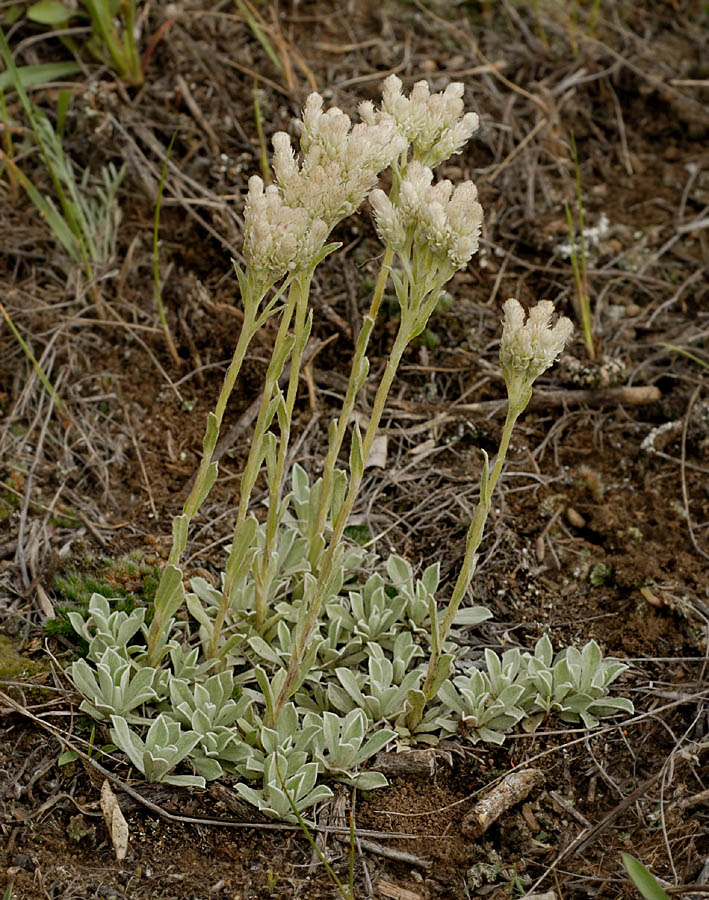
Low Everlasting
Antennaria aprica

Low Everlasting
Plants in Ground
Oro Lake Regional Park
09-June-2006A. aprica is easily confused with A. microphylla. Therefore, I have included specimens from both species in some of the pictures. Flora of North America lists A. aprica as a synonym for A. parvifolia. I have retained the specific epithet aprica because that is what is used in Budd's Flora and Flora of Alberta. Unfortunately, some floras (including both Budd's Flora and Flora of Alberta) have used parvifolia as the specific epithet for A. microphylla. A. microphylla is related to A. rosea, but is not closely related to A. aprica. For further discussion, see the entries in Flora of North America.
Aprica: Answers to key questions in Budd's Flora and Flora of Alberta leading to this species.
| |||||||||||||||||||||||||||||||||||||
Antennaria: Answers to key questions in Budd's Flora and Flora of Alberta leading to this genus.
|